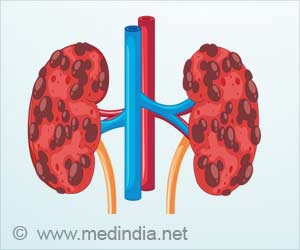Researchers have found that magnetic resonance imaging (MRI) alternated with mammography at six-month intervals can detect Breast Cancer.
Researchers from the University of Texas M. D. Anderson Cancer Center have found that magnetic resonance imaging (MRI) alternated with mammography at six-month intervals can detect breast cancers not identified by mammography alone.
MRI is known to be more sensitive in detecting breast cancers than mammography, with a 71 - 100 percent accuracy compared to a 16 - 40 percent accuracy for mammography.As a result, annual breast cancer screening for high-risk women now typically includes MRI along with mammography and a clinical breast exam.
"In the high-risk population, the recent standard of practice is to perform mammography and MRI every year," said Huong Le-Petross, M.D., assistant professor of diagnostic radiology at M. D. Anderson and the study's first author.
"What we started to do at M. D. Anderson was to see if we could do mammography and then six months later do a breast MRI exam, followed six months later with a mammogram exam, and then six months after that with a breast MRI. That way the women would receive an imaging modality screening every six months," Le-Petross added.
In the pilot study, the researchers performed a retrospective chart review of 334 women who had participated in a high-risk breast cancer-screening program at M. D. Anderson from Jan. 1997 to Dec. 2007.
The women had undergone between one and four MRI screening cycles and were considered to be at high risk if they had hereditary breast and ovarian cancer syndrome, a personal history of breast cancer, a biopsy indicating atypia or lobular carcinoma in situ (LCIS), or a 20 percent or higher lifetime risk of developing breast cancer, as estimated by the Gail model.
Advertisement
Among this group, 46 percent completed the first round of MRI screening, 28 percent completed the second round, 13 percent completed the third round, and 4 percent completed the fourth round.
Advertisement
The researchers found that alternating MRI and mammography screening program detected nine cancers among the 86 women-five invasive ductal carcinomas, three invasive lobular carcinoma, and two ductal carcinomas in situ.
Five (55 percent) of these cancers were identified by MRI but not by mammography, three (33 percent) were found by both MRI and mammography, and one (11 percent) cancer, a tumour one millimetre in size, was overlooked by both screening techniques. No cancer was detected by mammography alone.
"We found that MRI picked up the majority of cancers, while mammography picked up only three out of the nine," Le-Petross said.
The study has been presented at the CRTC-AACR San Antonio Breast Cancer Symposium.
Source-ANI
SRM














